Last updated on 2025-05-10
A review and Photo example of SUMMICRON R 90mm F2 with Digital cameras.
Table of contents
Gallery
- The sample photos were taken with R8 +DMR / LEICA SL / CANON EOS-1DsMKIII / HASSELBLAD X2D.
Review
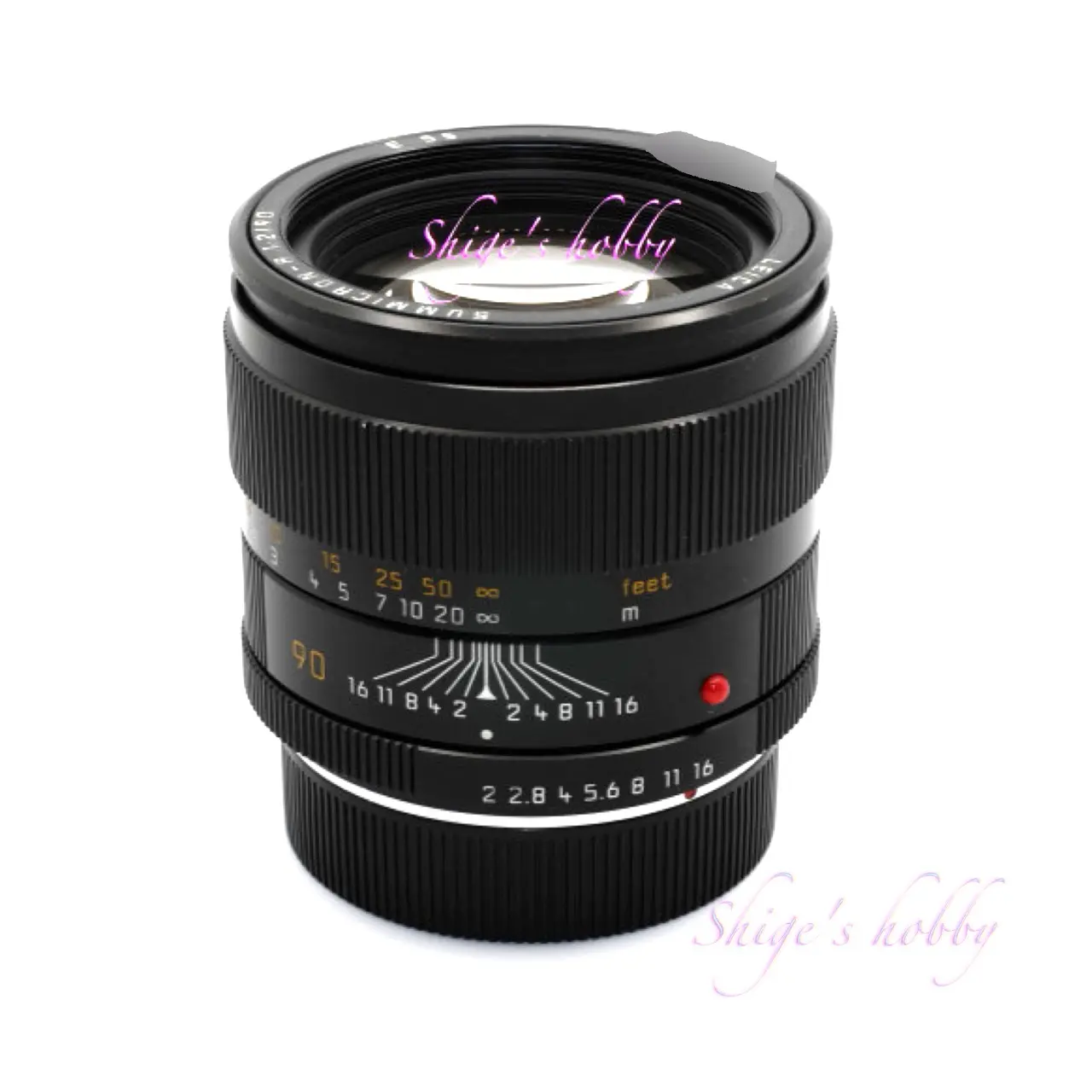
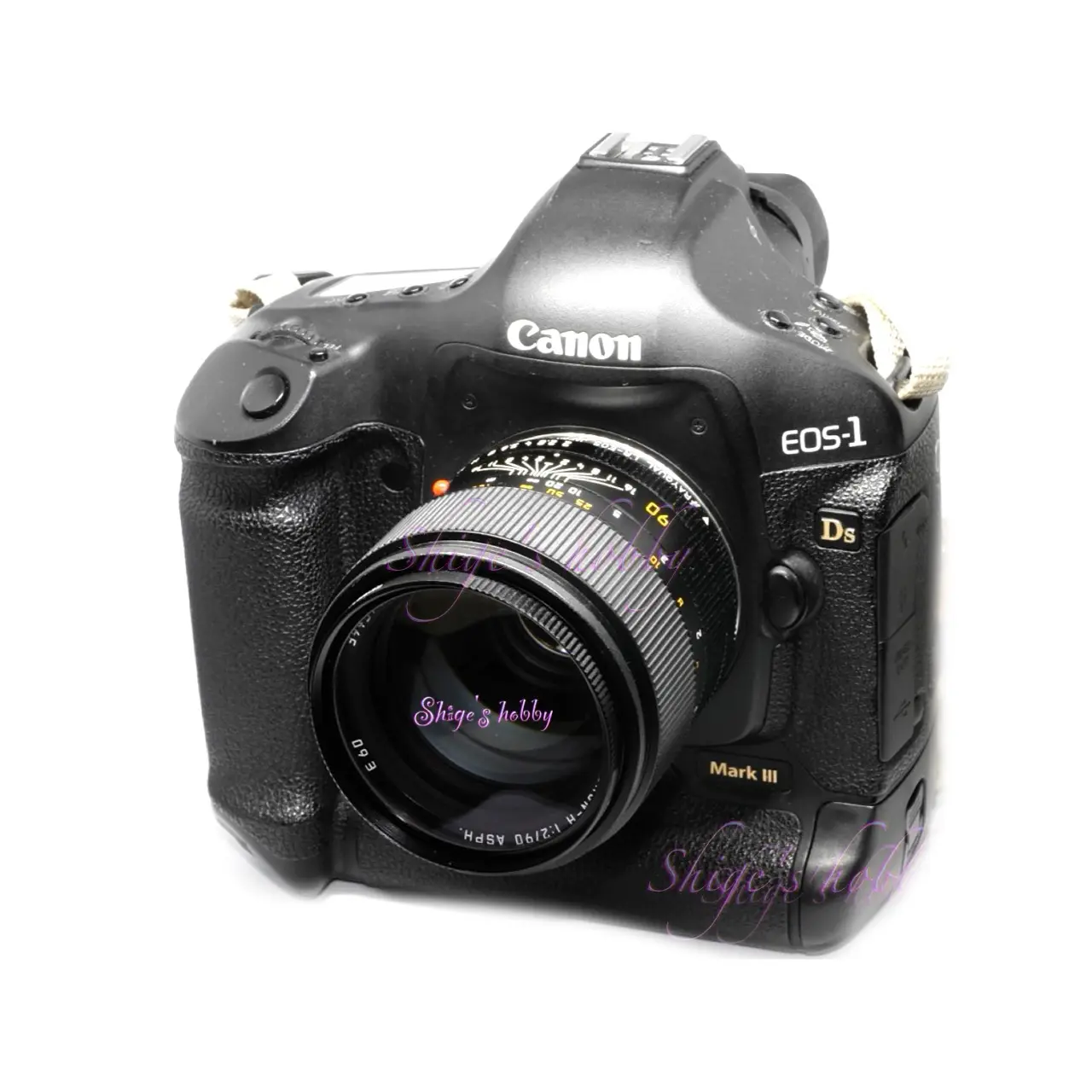
1.Overview
The Summicron-R 90mm is a medium telephoto lens for R-mount SLR cameras released in 1970.
It was a long-lived lens that was produced for 25 years, with its external shape changing until it was replaced by the APO-Summicron-R 90mm F2.
The main specifications are as follows, and detailed specifications are listed in the table.
- Aperture: 2
- Lens construction: 5 elements in 4 groups
- Aperture blades: 8
- Minimum focusing distance: 0.7m
- Hood: Retractable
- Filter diameter: 55mm (E55)
The LEICA WIKI records that 37,000 units were shipped between 1970 and 1995.
R-mount variations include 2-CAM, 3-CAM, and a modified version with a ROM terminal.
2.Usage
The Summicron-R 90mm F2 (hereafter referred to as Summicron-90R) is a medium telephoto lens for the Leica R. The Summicron-R 90R is a lens that is relatively common on the second-hand market, but this later model is rarely seen.
The new model has a simple single-stage lens hood, while the older model has a two-stage built-in lens hood.
The lens is made up of five elements in four groups, with the second and third elements glued together, and has maintained the same lens configuration even though the appearance of the lens has changed since its release.
As the lens has been made with this lens configuration for a long time, it has a smooth bokeh and a clear depiction, making it a lens that can be used with confidence.
The depiction at full aperture is a little softer than that of the Apo-Summicron-R 90mm F2 (hereafter referred to as Apo-Summicron-90R), but it is within the acceptable range if you consider it a taste. The later model Summicron-90R that I owned was 3-CAM and unfortunately did not have a ROM terminal.
The minimum shooting distance is 0.7m, the same as the APO-Summicron-R 90mm, but compared to the 1m of the M-mount Summicron 90mm, this lens allows you to get closer.
As for operability, the focus ring can rotate from infinity to the minimum shooting distance of 0.7m at about 270 degrees, which is the standard angle for lenses with focal lengths of 50mm or more, so you can focus carefully on the subject with manual focus.
I bought this lens as junk at a map store. The problem was that it couldn’t focus at infinity, so I took it to a familiar used camera shop for repairs, and it came back with perfect infinity and a decent helicoid for about 50,000 yen. However, in cold seasons the grease becomes hard and the feel of the helicoid becomes less than ideal.
As an option, you can use the 14236 Extender 2x to use it as a 180mm F4 telephoto lens.
Close-up photography is also possible using the 14256 MACRO-ADAPTER R and 16543 ELPRO3.
The ELORO3 mounts with a 55mm screw, so it can be used with the SUMMICRON R 90mm F2, MACRO ELMAR R 100mm F4, and ELMARIT R 135mm F2.8.
3.Summary
To sum up the SUMMICRON R 90mm in conclusion, it is easier to obtain and cheaper than the APO SUMMICRON R 90mm F2, but with a minimum shooting distance of 0.7m, it can get close and produces stable images, so if you are a photographer who does not use medium telephoto lenses often, this lens will suffice.
If you use medium telephoto lenses often, it is better to look for the APO SUMMICRON R 90mm F2.
Competitive Lens
As stated in the specifications, the SUMMICRON R 90mm has a 4-group, 5-element lens configuration, while the APO SUMMICRON 90mm ASPH. has a 5-group, 5-element lens configuration, with the third lens on the front being an aspherical lens.
The APO SUMMICRON 90mm ASPH. separates the second and third lenses, which were cemented together in previous Summicrons, and uses an aspherical lens instead.
This change is thought to be due to the advances in lens coatings that have made it possible to reduce reflections without using cementing, so an aspherical lens was used for this cemented lens to control aberrations.
The results of the APO SUMMICRON 90mm ASPH. seem to be superior to the SUMMICRON R 90mm in terms of image flatness, resolution, and peripheral image quality.
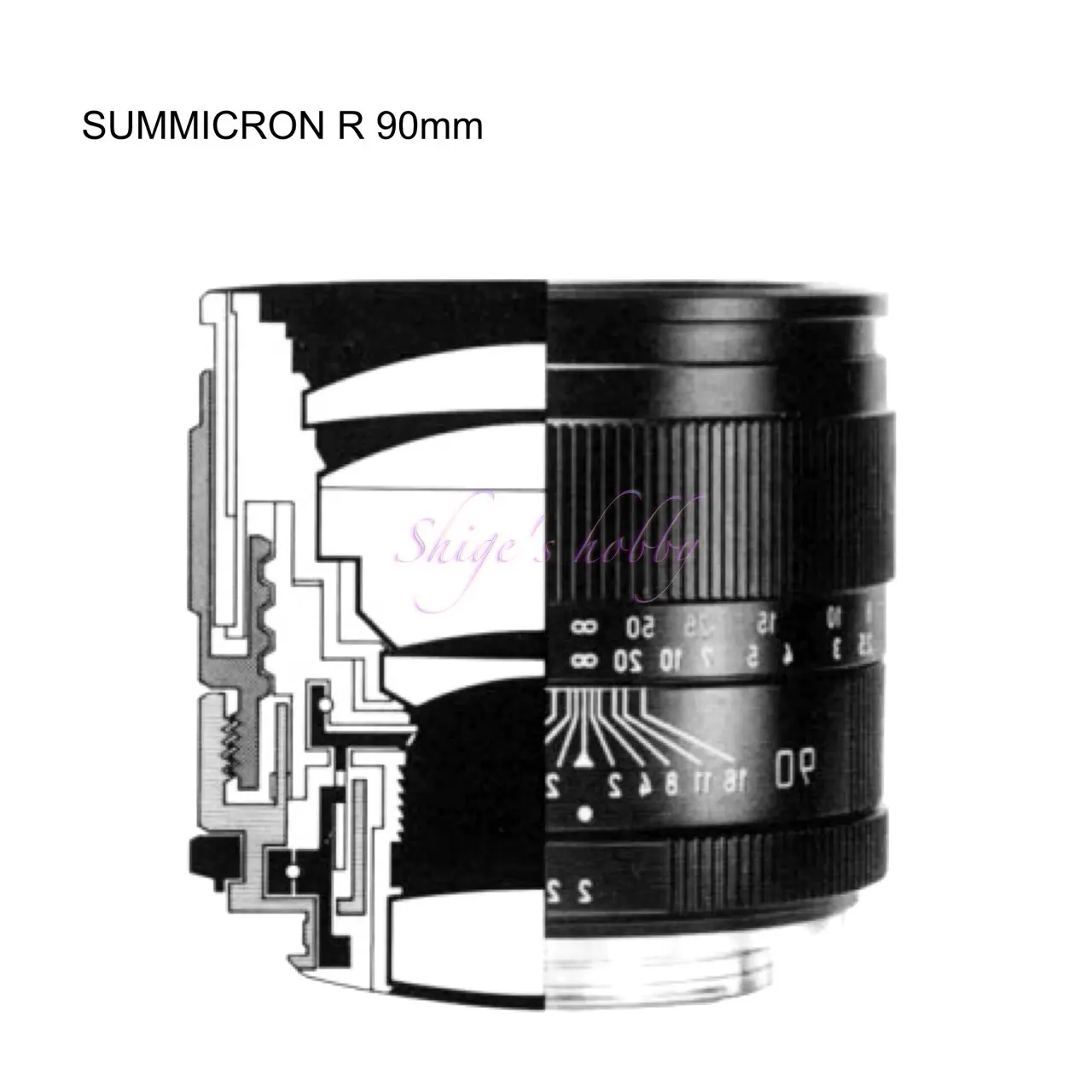
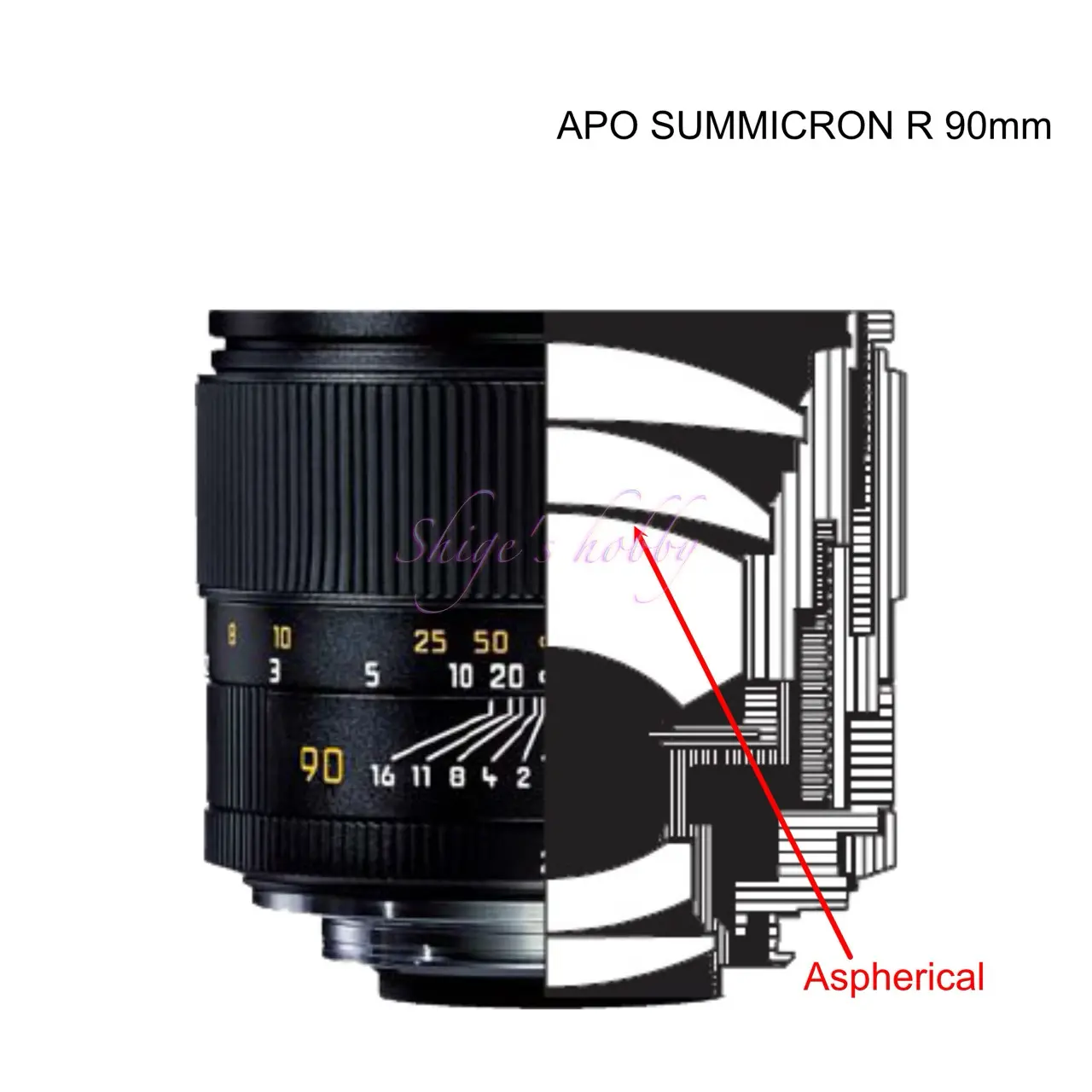
From the third generation Summicron 90mm in 1980 onwards, the M-mount version had a lens configuration almost identical to the Summicron 90R introduced here. The previous M-mount version of the Summicron 90mm had a lens configuration of six elements in five groups, which was more than the current number of lens elements. It is interesting to compare these differences.
Mount Adapter
The image circle of this lens is wide, and on an X2D digital medium-format 44 x 33mm sensor, it is 100% usable with a 3:2 crop. There is some shading in the corners and some softness in the depiction, but the wide image circle, which exceeds that of a 35mm sensor, is a luxury that comes with an old lens.
I have never encountered Error 20 (Err20), which occurs when the rear lens element interferes with the camera sensor, because the rear lens element is contained within the mount, which is a problem when using it with the EOS 1DS MK-III.

Specification and Competitor
| Item | APO SUMMICRON R | APO SUMMICRON M | SUMMICRON R |
| focal length(mm) | 90.9 | ← | 90 |
| Maximum aperture | 2 | ← | ← |
| Minimum aperture | 16 | ← | ← |
| Leaf blade | 8 | ← | ← |
| Lens configuration | 5groups 5elements | ← | 4groups 5elements |
| Minimum distance(m) | 0.7 | 1.0 | 0.7 |
| Lens length(mm) | 59.3(R-mount) | 78(M-mount) | 61.4(R-mount) |
| Lens max diameter(mm) | 71 | 64 | 69 |
| Filter diameter(mm) | 60 | 55 | ← |
| Weight(g) | 520 | 660 | 522 |
| Release date | 2002-2003 | 1997- | 1970-1995 |
| Production Numbers | 2,000- | 14,820 (~2005) | 37,954 |
Reference links
- SUMMICRON 90mm F2 by Leica wiki
- Introduction page for the APO SUMMICRON-R 2/90 ASPH. (link in Shige’s hobby)
Update history
- 2025.4.1
- 2024.02.17:Update article
- 2023.03.16:First draft
Affiliate link
- Please see the disclaimer regarding advertising here.
- Italicized links in the text are advertisement links that take you to other sites.
- Leica R lens・Ads by ebay
- Leica M lens・Ads by ebay
- Leica TL・Ads by ebay
- Leica SL・Ads by ebay


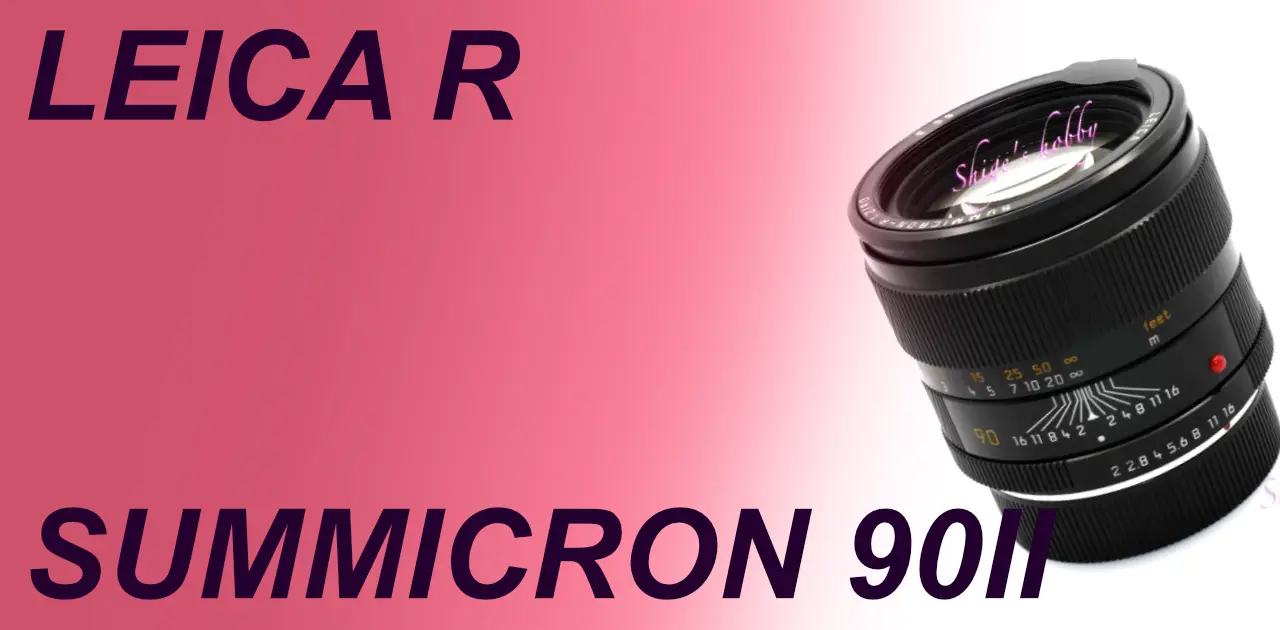

Be First to Comment